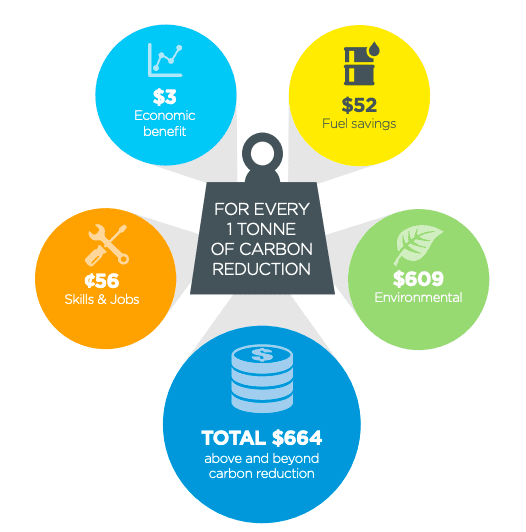Welcome back to The Fixer, our weekly briefing of solutions reported elsewhere. This week: an incubator gives agricultural workers space to grow their own crops. Plus, carbon offsets start surging, and one of America’s first stormwater farms reports on the soggy success of its first rain-soaked spring.
Room to grow
Farming is a tough business in America. There are 162,572 fewer farms today than there were just 12 years ago, in part because starting a new farm is such a heavy lift. It requires not just costly machinery and land, but business savvy and connections. To help turn the tide, incubator farms are helping field workers overcome these hurdles and start their own farms.
Nearly 200 farm incubators are now active in the U.S. One is the Agriculture and Land-Based Training Association (ALBA), which offers a 10-month course in agribusiness management. Tuition is income-based, and most enrollees pay only about $300 to learn everything from marketing strategies to meeting organics standards. Graduates of the program pitch their farm concept to the incubator, and those selected are rented plots on ALBA’s 100-acre farm for as little as $130 per quarter acre. As the participants’ farms profit and grow, ALBA rents them more and more land, until their farms have reliable enough revenues to be spun off and sustain themselves.
Nearly half of ALBA’s 104 graduates own their own farm today, an impressive success rate by startup standards. “They’re doing something right,” one industry rep told the New York Times. And most of those who decided not to start their own farm still work in the agriculture industry, but report increases in their incomes thanks to the business training they received from the incubator.
“I came a long way,” one graduate who now owns an organic broccoli farm told the Times. “They taught me a lot—not just how to grow, but the business part.”
Read more at the New York Times
Carbon offsets hit their stride
The Guardian reports that public pressure is driving “huge increases” in carbon offsetting, in which companies invest in carbon-reducing efforts elsewhere to offset their own emissions.
According to ClimateCare, a company that helps large corporations offset their emissions, the amount of carbon offset during the last 18 months increased from two tons to 20. Regular folks appear to be investing more heavily, too—the NGO Climate Stewards told the paper that carbon offsetting by individuals and small companies had increased by 156 percent and 80 percent year on year, respectively.

Some industry observers chalk up the shift to what they call the “Greta Effect,” named for the 16-year-old Swede who has led a series of massive global climate protests. These protests have increased the pressure on businesses to mitigate their effects on the environment. “We are seeing the Greta effect, the impact of Extinction Rebellion, the impact of the words of David Attenborough, the school strikes, all of these coming together,” said one carbon offset advocate.
The offset model has its critics, who say it’s simply a way for those with money to shift responsibility onto those who can’t afford to pass the buck. But global carbon and renewable energy markets have become far better regulated over the last decade, and participants are held to tougher standards than they used to be, according to advocates.
“People are willing to take action and are looking for ways to take action,” said the director of Gold Standard, which monitors the integrity of carbon offsetting schemes. “We see it as a way that someone can feel empowered and reduce their carbon footprint.”
Going with the flow
Last year, one of America’s first stormwater farms opened in Peoria, Illinois, a bucolic swathe of poplar trees and planting beds smack in the middle of the city. Known as the Well Farm, its beds of lettuce, kale and other vegetables capture runoff from a one-and-a-half acre section of the city when it rains. Now well on its way to maturity, Peoria’s stormwater farm got its first test this year.
It was an especially wet spring for the city—14 inches of rain fell from May through July. Normally, much of that rain would have flowed directly into the Illinois River. According to a report recently released by the city, however, 1.1 million gallons of this stormwater was diverted to the farm, which absorbed 98 percent of it.
https://www.facebook.com/TheWellFarmPeoria/photos/a.2135061506740973/2135063193407471/?type=3&theater
As one of the engineers working on the project put it, “This area of the country has a hydrology… so that in the past, most of the rainwater that fell actually soaked into the ground. So now we’re looking at some of nature’s wisdom to exploit some of that capacity of plants and soil to keep [the rainwater] from getting into the combined sewer system.”
The farm does double-duty as a revenue generator for the city. An impact assessment found that the jobs and harvestable crops from the farm generated $2.8 million in economic activity, or $1.50 for every dollar invested. And there’s plenty of room to scale—the EPA has identified 860 other cities where overflow from combined sewer systems is a water pollution priority.






